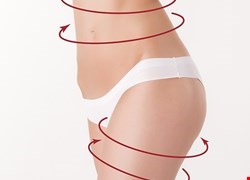- Home
- HealthEducationLeaflet
- Autologous Fat Grafting
Autologous Fat Grafting
Autologous Fat Grafting
As we age, the subcutaneous fat tissue tends to shrink, leading to a loss of facial fat and collagen, resulting in a hollow appearance. Autologous fat injection can be performed to restore volume to the face. Additionally, it can be used to fill in depressions caused by tissue loss due to trauma, resulting in smoother skin.
Procedure for Autologous Fat Grafting
Autologous fat injection surgery is typically performed under local anesthesia. The surgeon will assess the areas from which fat will be harvested, such as the abdomen, buttocks, or thighs. After the fat is extracted, it is processed using a centrifuge to obtain purified fat cells. The refined fat is then injected into the desired areas using a micro-autologous fat grafting gun. Care is taken to ensure symmetry during fat placement. The procedure is considered complete once the fat is successfully injected.
It is important to note that approximately 50% of the injected fat will be absorbed by the body within a year, and the rate and timing of absorption may vary from person to person. During the consultation, you can discuss with your surgeon whether to inject a larger amount at once to allow for more fat retention or consider a second fat grafting procedure after 3-6 months.
.jpg)
Common Areas for Autologous Fat Grafting
- Cheeks
- Traumatic tissue defects
- Forehead
- Temples
- Sunken eye area
- Nasolabial folds, frown lines, apple of the cheeks
- Lips
- Chin, nasal root, facial contour adjustment, chest
Precautions for the Surgery
- Refrain from taking anticoagulant medications (such as aspirin) one week before the autologous fat grafting surgery. Inform your doctor if you are taking any of these medications. Also, avoid nutritional supplements (such as Lingzhi mushrooms, ginkgo biloba, vitamins, fish oil) and reduce the consumption of blood circulation-enhancing foods like ginseng.
- After the surgery, follow the instructions given by your surgeon. You may apply ice packs to the injected areas 5-6 times a day for 20 minutes each time. In the first week after the surgery, there may be swelling and slight bruising at the injection sites. The application of ice packs can help alleviate pain and reduce swelling.
- Avoid applying pressure or massaging the treated areas on the face and chest for one month after the surgery.
- The incisions for fat extraction do not need to be sutured. You can take showers with waterproof dressing. Elastic bandages or compression garments should be worn on the areas where fat was harvested for one week.
- Maintain a normal diet and sleep pattern after the surgery. Avoid smoking or exposure to second-hand smoke.
- It is normal to experience temporary abnormal sensations in the areas where fat was injected.
- Within a month after the injection, you may feel lumps under the skin, which is a normal occurrence that will gradually disappear.







